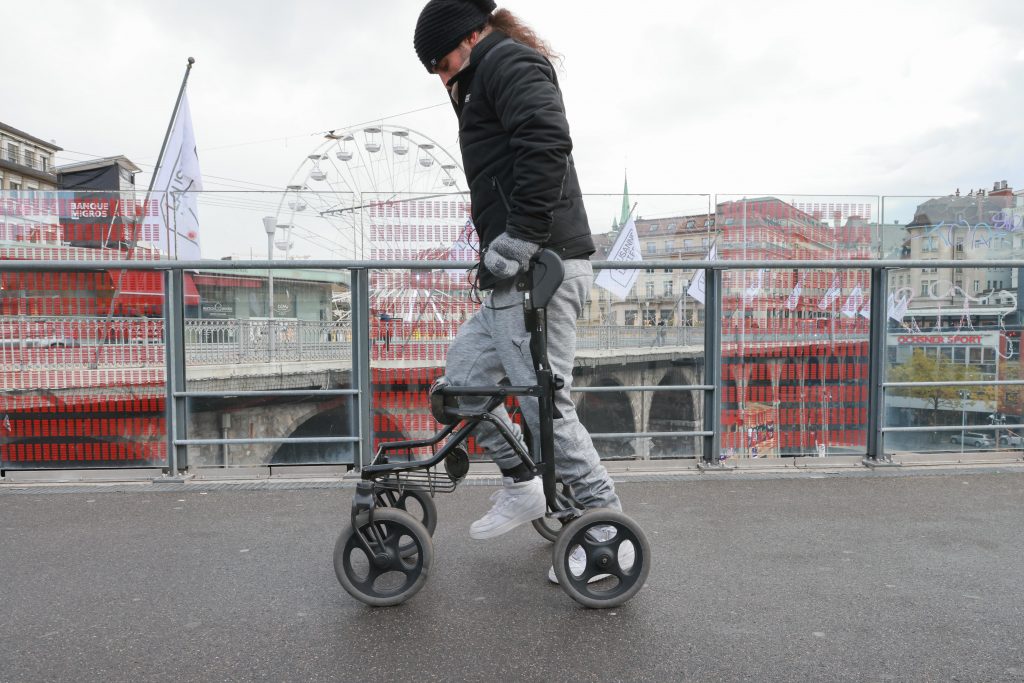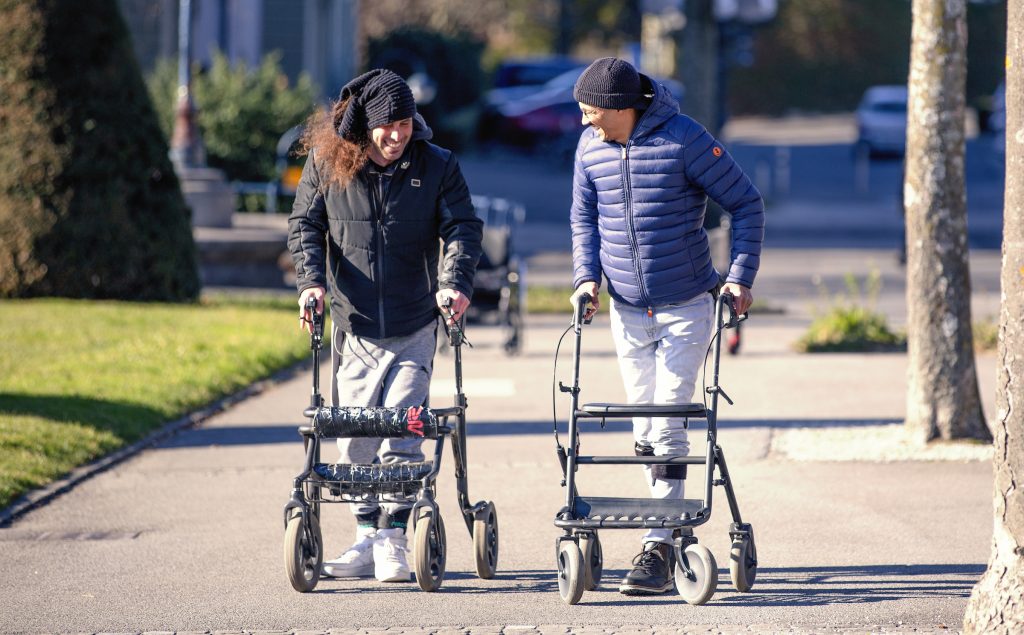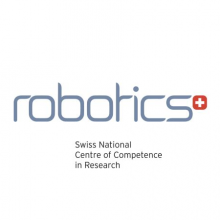
Robohub.org
New implant offers promise for the paralyzed

Michel Roccati stands up and walks in Lausanne. © EPFL / Alain Herzog 2021
The images made headlines around the world in late 2018. David Mzee, who had been left paralyzed by a partial spinal cord injury suffered in a sports accident, got up from his wheelchair and began to walk with the help of a walker. This was the first proof that Courtine and Bloch’s system – which uses electrical stimulation to reactivate spinal neurons – could work effectively in patients.
Fast forward three years, and a new milestone has just been reached. The research team led by both Courtine, a professor at EPFL and member of NCCR Robotics, and Bloch, a professor and neurosurgeon at CHUV, has enhanced their system with more sophisticated implants controlled by artificial-intelligence software. These implants can stimulate the region of the spinal cord that activates the trunk and leg muscles. Thanks to this new technology, three patients with complete spinal cord injury were able to walk again outside the lab. “Our stimulation algorithms are still based on imitating nature,” says Courtine. “And our new, soft implanted leads are designed to be placed underneath the vertebrae, directly on the spinal cord. They can modulate the neurons regulating specific muscle groups. By controlling these implants, we can activate the spinal cord like the brain would do naturally to have the patient stand, walk, swim or ride a bike, for example.”

Patient with complete spinal cord injury (left) and incomplete spinal cord injury (right) walking in Lausanne, Switzerland. ©NeuroRestore – Jimmy Ravier
The new system is described in an article appearing in Nature Medicine that was also co-authored by Silvestro Micera, who leads the NCCR Robotics Wearable Robotics Grand Challenge. “Our breakthrough here is the longer, wider implanted leads with electrodes arranged in a way that corresponds exactly to the spinal nerve roots,” says Bloch. “That gives us precise control over the neurons regulating specific muscles.” Ultimately, it allows for greater selectivity and accuracy in controlling the motor sequences for a given activity.
Extensive training is obviously necessary for patients to get comfortable using the device. But the pace and scope of rehabilitation is amazing. “All three patients were able to stand, walk, pedal, swim and control their torso movements in just one day, after their implants were activated!” says Courtine. “That’s thanks to the specific stimulation programs we wrote for each type of activity. Patients can select the desired activity on the tablet, and the corresponding protocols are relayed to the pacemaker in the abdomen.”
Read the full story on the EPFL website.
tags: c-Health-Medicine



